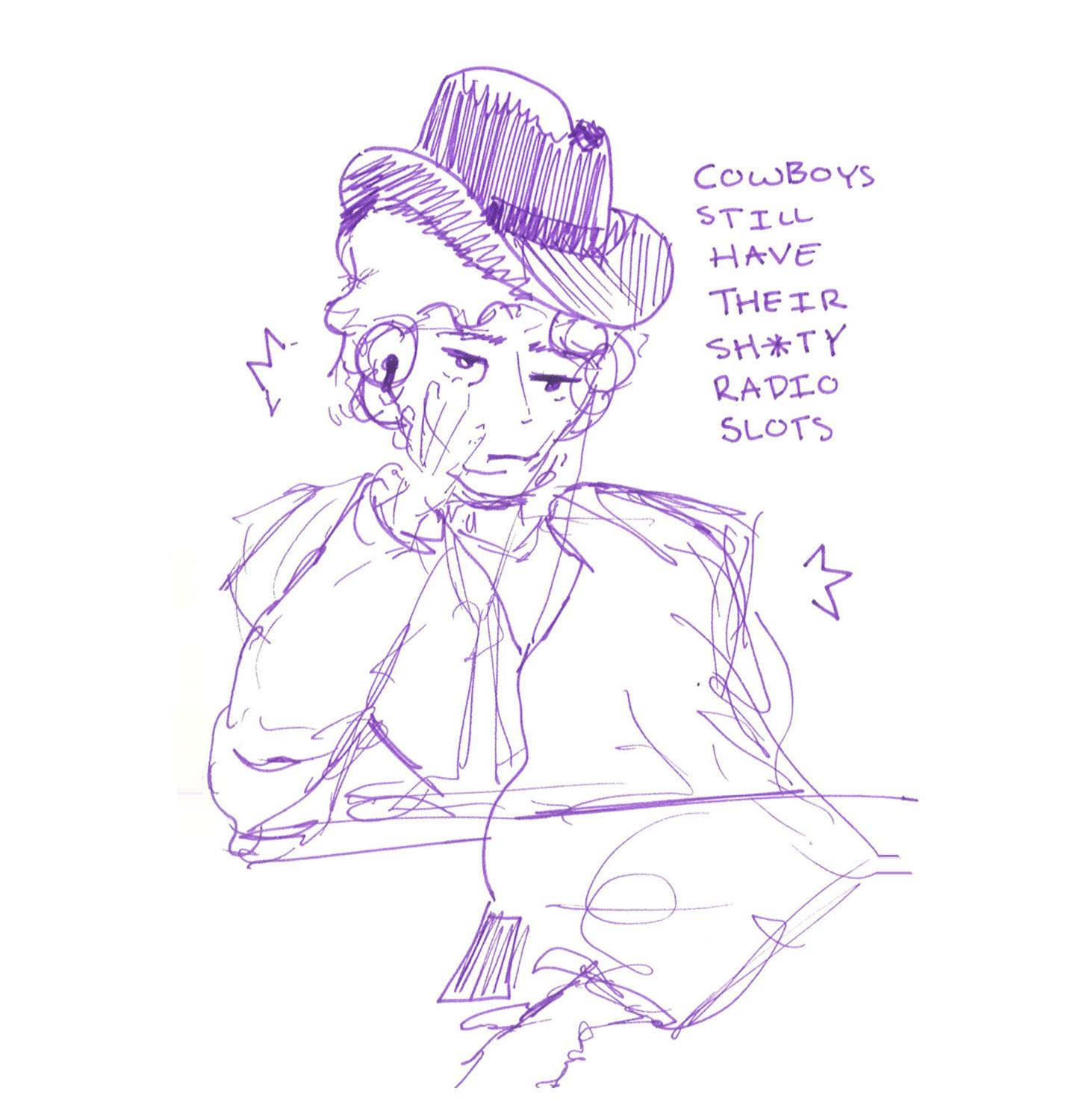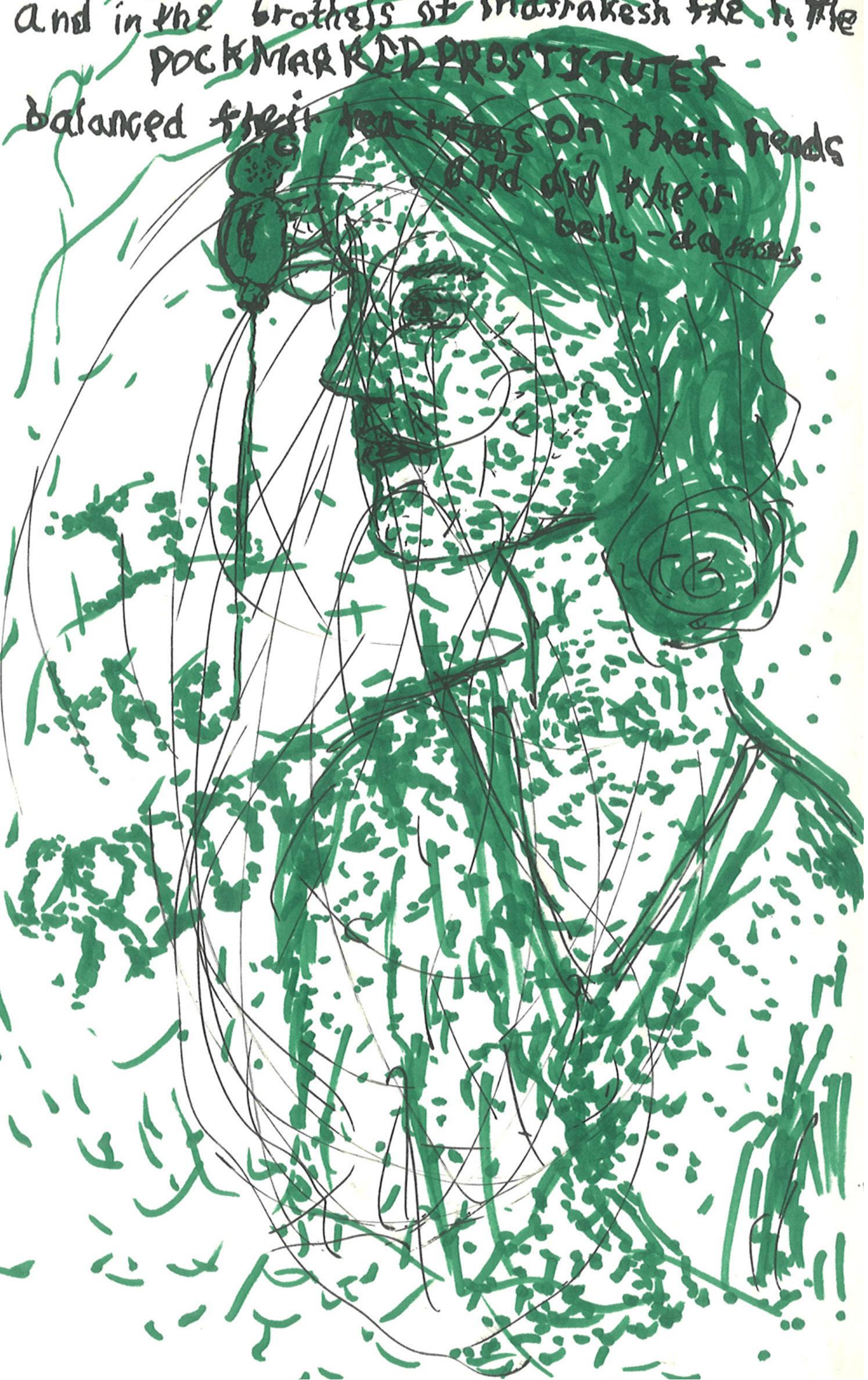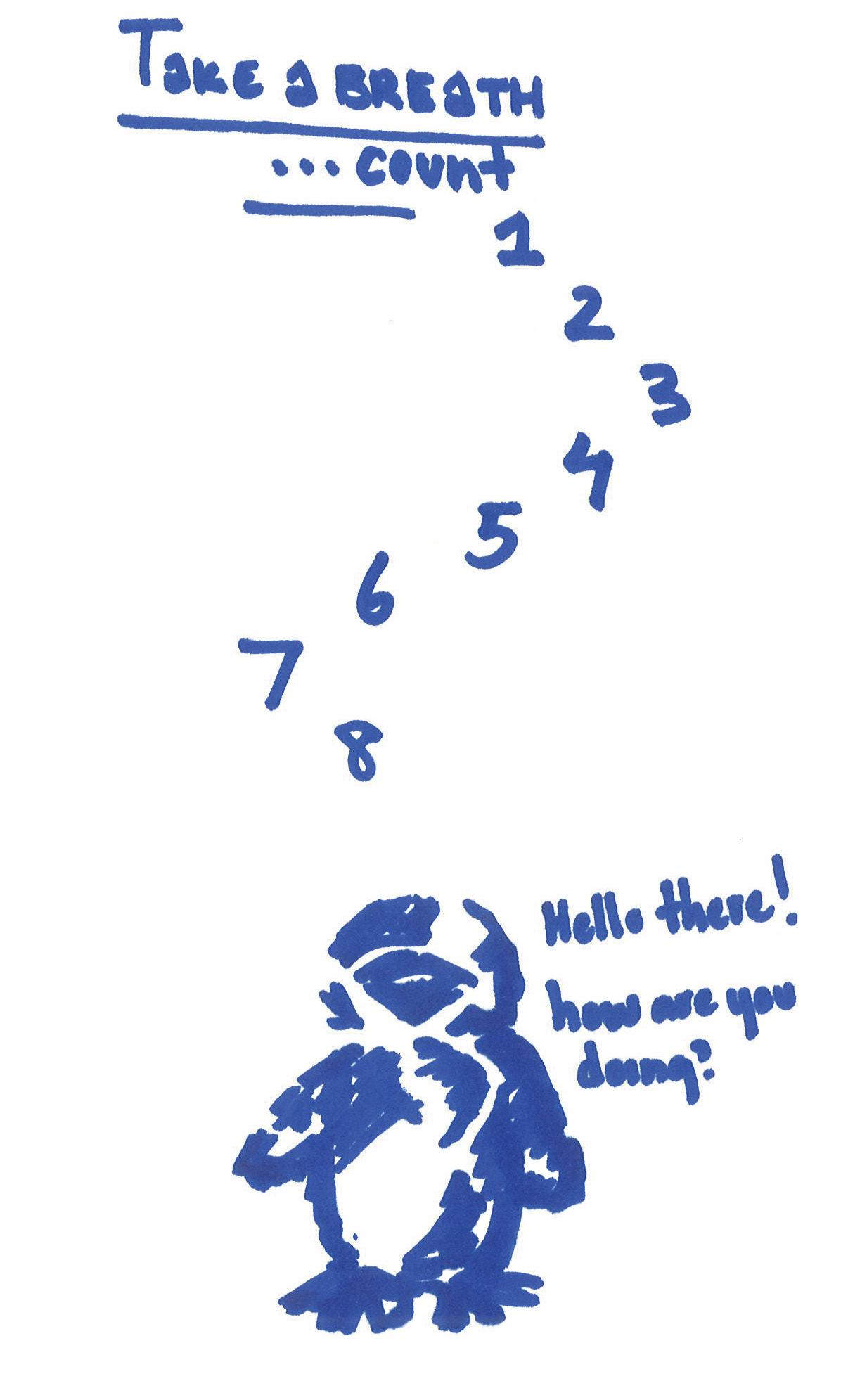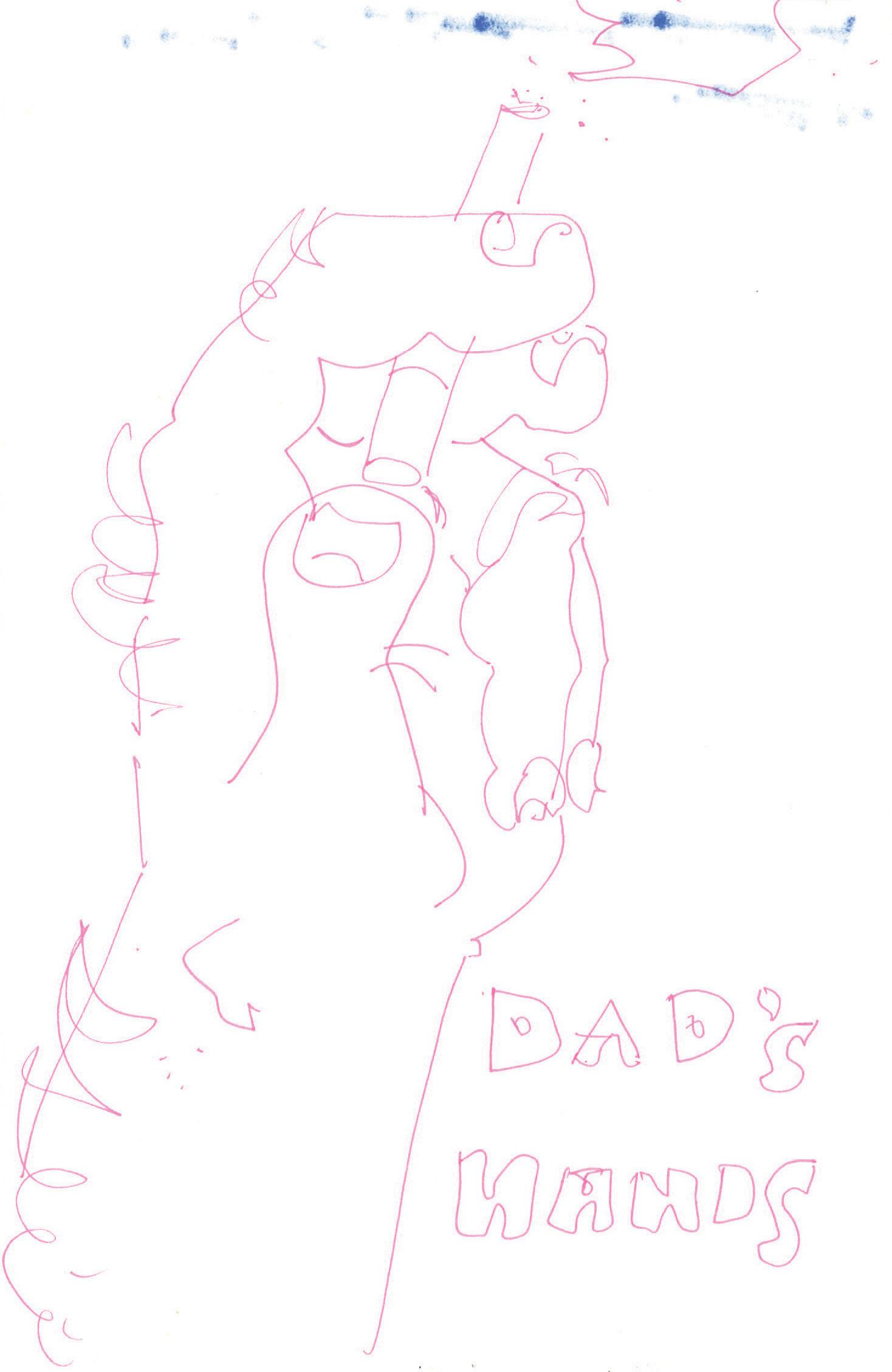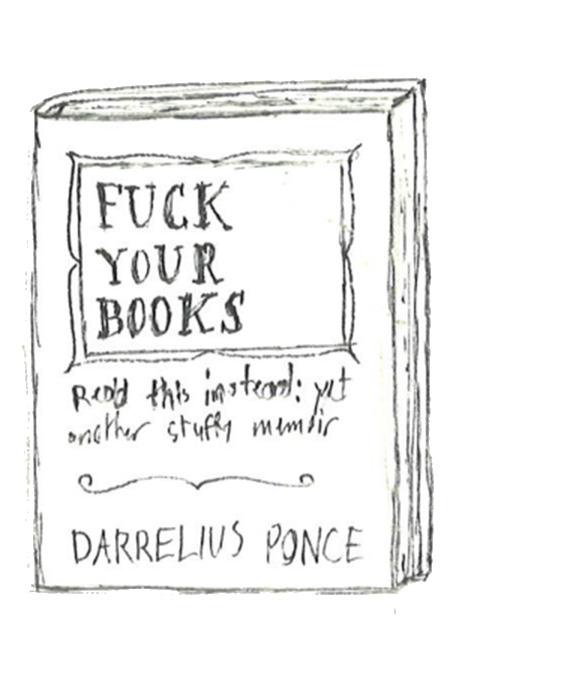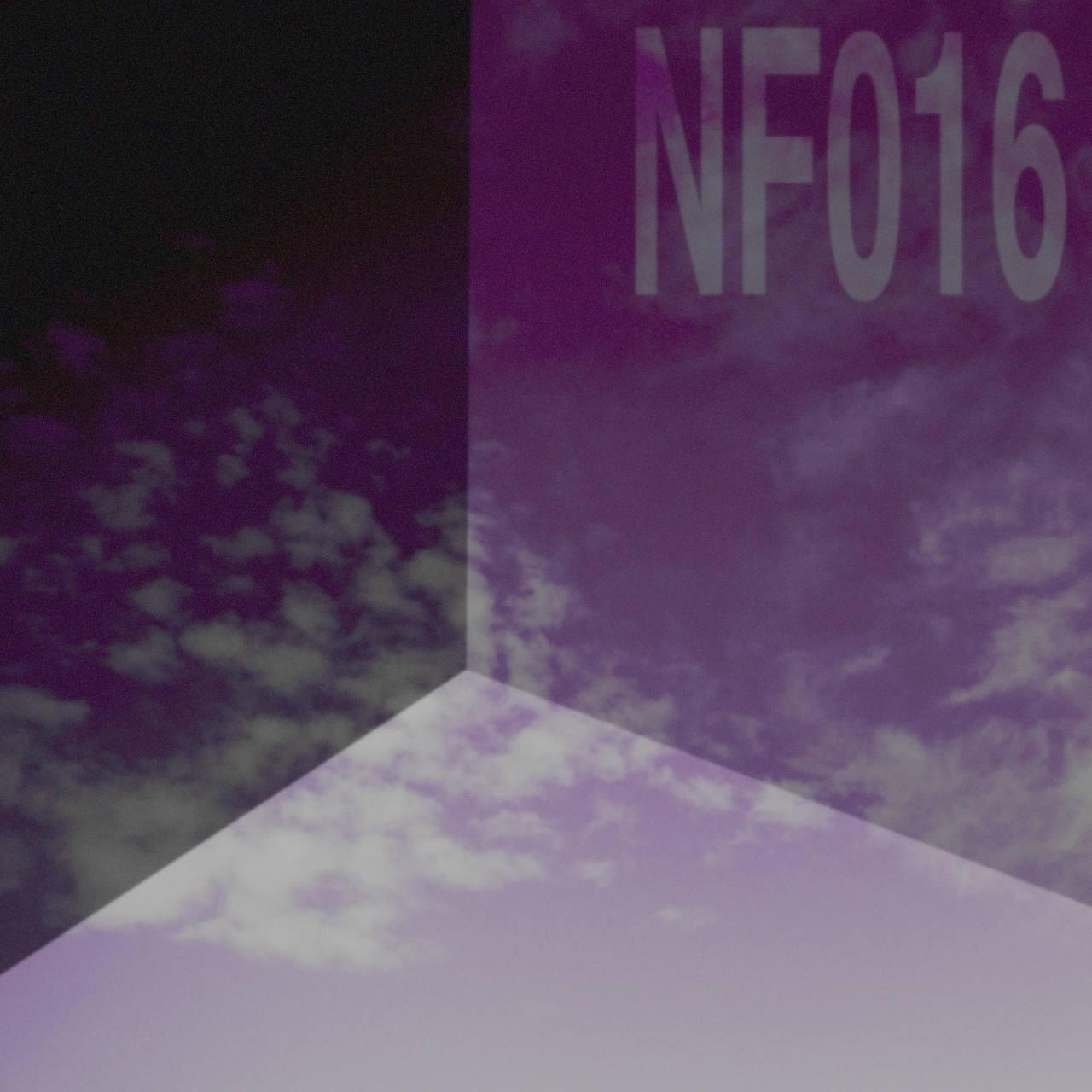




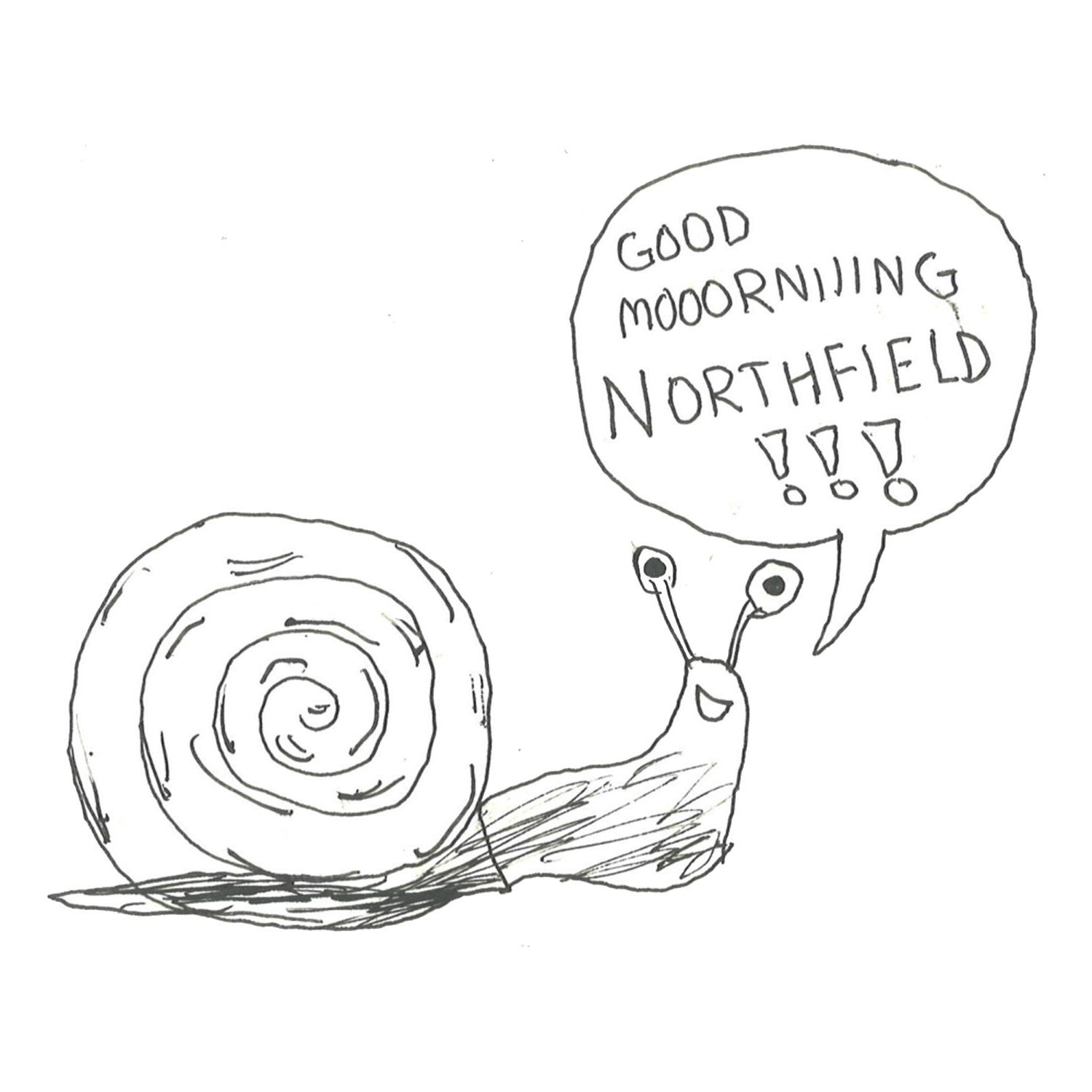
NoFi is open to all students interested in or passionate about music, art, and pop culture and welcomes all varieties of submissions. Email nofi@krlx.org or dm us on Instagram @no.fidel with inquiries, questions, etc.
The Half that Wazn’t Told by Cameron
Sibling Albums For Sibling Movies by Henry Holcomb................................6
Cold Blooded Animalz #1 bu Cameron
Album Review: Half me - Soma by Jimmy Carlson....................................11
The Loop That Brings You to Your Knees by Alberto León.........................13
Cold Blooded Animalz #2 bu Cameron Kelley..........................................15
“Is this how the whole thing is gonna end?” by Helena Squires Mosher....16
Cold Blooded Animalz #3 bu Cameron
Cultivating a Playlist by Joanne Chung......................................................19
Cold Blooded Animalz #4 bu Cameron
Funniest Lyrics by the NoFi Community.................................................23
Spring term at Carleton College has always been considered an erratic place in the time-space continuum, and this one was no exception. Therefore, I wanted this edition to reflect these ten weeks where burnout and euphoria coexisted. Where there was a huge-ass snow right before a 90-degree weekend and then another huge ridiculous, nonsensical snow. And despite this lack of coherence between oneself and space, oneself and time, oneself and the absurd amount of work that professors put out, we still have this magazine alive because creativity comes out and resolves the Northfieldian nature of Spring Term at Carleton College.
Ironically, writing an editor’s note is one of the hardest things an editor of such a prestigious publication must do. I’m not against them, but it is hard to word what happened to me while I was working on this issue, as well as to word what was impeding me from working on this issue. what makes it even more complicated is that the resolution of said dichotomy was this issue! I was as exhausted as any of our wonderful contributors, and despite this, we all used our tiredness and spite to the Carleton routine to create this beautiful magazine you have in your hands right now
A big hug to you all, Alberto León ‘25


This past fall, I wrote an article for NoFi mapping out the connectionz between muzical counterculturez from the unionist folk tradition through psychedelia to punk rock. What got published then, “The Miracle of the Mosh Pit,” waz only half the article, the other half remaining unwritten though fully charted in my head. Basically, it iz a critique of the first half, which factorz race into the history of counterculture, emphasizing how white counterculture––from hipsterz hanging out in jazz joints to hippiez with their peace, love, and happiness, to the dub deluzionz of the post punk era––haz alwayz emulated and riffed off black culture in order to differentiate itself from mainstream white culture.
Disregard whatever “hipster” meanz today, at least for the moment. In 1950 it had a clear meaning: a white guy that liked jazz. The prefix “hip” can be associated with blackness; the way a white person becomez hip iz by acting black, enculturating themself within black culture. And just as Jack Kerouac and hiz fellow beats wished they could be black, so the hippiez the generation following tried to claim whatever blackness they could to scrape together a semblance of authenticity az any particular identitiez get washed by in a sea of consumptive whiteness.
for black audiences, iz frequently invested in notionz of authenticity and aesthetically valued based on the rawness and expressivity of some essential “blackness.”
But authenticity iz alwayz a false standard; one can only judge the performance of authenticity, how soulful and spirited the performer seemz to be. So white folkz appropriated a black expressive vocabulary, and it seemz the highest paid bluez guitarists were white men.

The birth of punk, however, iz racial dysphoria. It can be summed up well by a quote from Iggy Pop: “One day I went down to the lake and I realized that I wazn’t black.” Growing up in Detroit, the racial divide became evident to Iggy, so he went on to playing hiz psychedelic punk with simplified chordz and lyrics of 25 wordz or less (nice and eazy so white folkz can find the beat too).
To be clear, there iz a problematic association between blackness and authenticity. Normative American culture suppressez both, and if it can’t kill it, it will commodify it, commercialize it, turn it into a Disney movie (worth mentioning that Mickey Mouse iz a blackface minstrel).
“Black muzic,” or the muzic created by black artists that is, on an industrial level pigeonholed
The dezire to be black remainz; the white counterculture drawz itz inspiration from black culture. Listen to Iggy’z “Turn Blue,” off of Lust for Life. In a conversation with Jezus, Iggy depicts a rebirth az a black man. The distance between the racez allowz for imaginative space for the white man to project strength, sexuality, and authenticity onto black bodiez, az he strugglez to feel thoze traits for himself. Ultimately, the barrier iz insurmountable without a type of death, without a rebirth, without being a Lazarus. The song endz with Iggy confessing to Mama, both “I shot myself down” and “I shot myself up.” Hiz embodiment of blackness iz, in this sense, achieved through social death and drug use.
Blackness, az defined by the punk scene,
haz more to do with social pozition than color. Patti Smith states this most emphatically when she callz Jesus, Jimi Hendrix, and Jackson Pollock the N word. The track (on Apple Music at least it’z been censored from Easter––you can listen to the prelude but I’ve only heard it from a CD) makes the case that rock and roll az a culture exists “outside society,” that thoze who go for it assume a blackness, az well az a degree of scorn from the mainstream. It iz both appropriate and ironic that the song haz been canceled.
Punk reprezents the anarchistically organized discontentment of a generation. Az with the white dominated counterculturez that came before them, they emulate and appropriate black culture.
The illuzion amid all of this iz that there iz sharp divide between white and black muzics. There izn’t––just standardized genrez and patternz of production that curate the muzical markets for racialized audiencez. Isaac Hayes grew up listening to the Grand Ole Opry just az Joe Strummer listened to Bo Diddley. If, az a rule, the underground muzic of one decade iz the popular muzic of the next, the underground spacez will be especially marked by muzical fuzion, racial mixing, and a rearticulation of normative idealz. That iz to say, white and black genrez cannot be fully separated, which bringz me to the final diagnosis of this paper.
In the 1970s, while Bob Marley and Willie Nelson were slowing down the beats, Johnny Rotten and Joey Ramone were picking up the pace. Picture this: in one space Culture callz upon Jah for Armageddon, for deliverance for downpressed people everywhere, and in another the Circle Jerks propel a whirlpool of cokeheadz. Reggae––and the conscious ska and rap that growz out of it––usherz in the downfall of Babylon, the death of whiteness. Separately, punk performz that societal death. Drugged out, useless, destined to die young, punks have no problem embracing the end of the world prophesied by black society.
The different genrez, classed az racially separate enterprizez and discoursez, work in complement with each other: reggae propheziez the destruction of the indulgent, nihilistic world
that punk iz born out of; punk createz an ecstatic intersubjective mass out of the white bodiez az they recklessly consume themselvez and the overstimulating chaos of their time. And in many spacez, the two genrez merge, whether it’z twotone ska with the Specials, roots conscious world muzic with the Clash, the Rasta thrash with the Bad Brains, or the dub beats of the Cure.
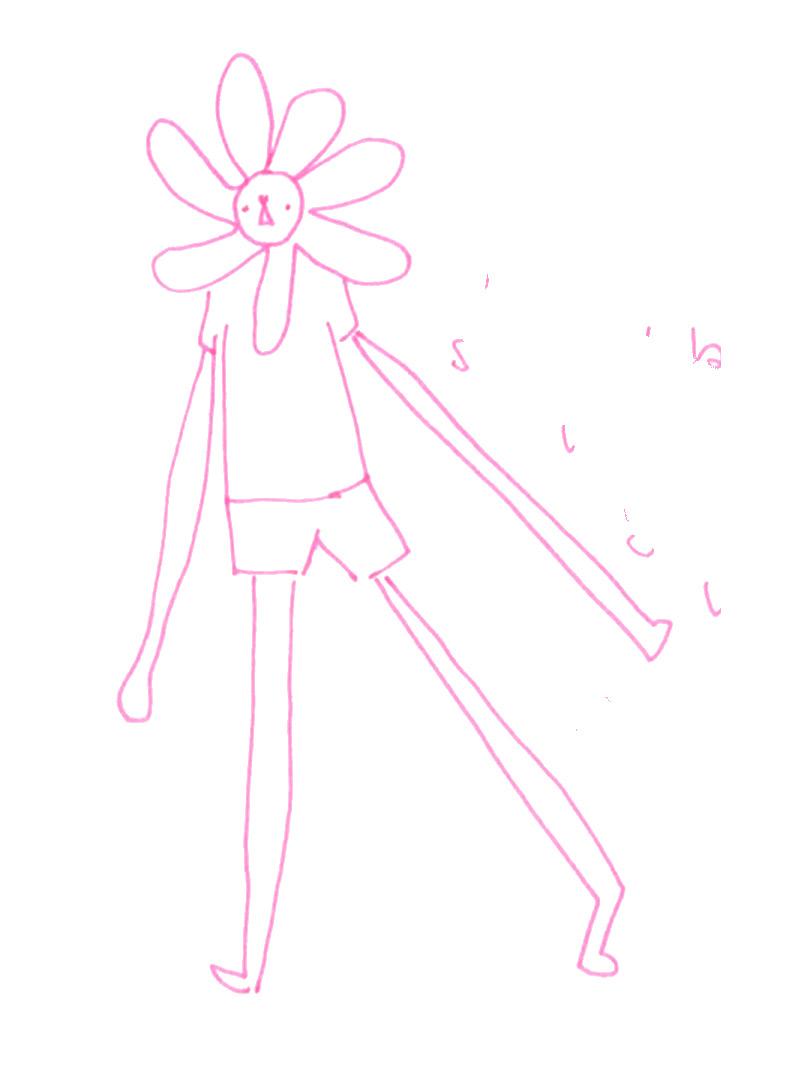
In all, that iz to say, new muzics rezult from syncretizmz of genrez, and within the racially segregated muzic industry, the black body iz fixated upon az a model for performance. Blackness––exile from society––offerz an expressive vocabulary in which to create alternate spacez, new identitiez. Thus, the intersubjectivity of a crowd at an Allman Brothers concert iz predicated upon a feeling of authenticity, and a claim of blackness.


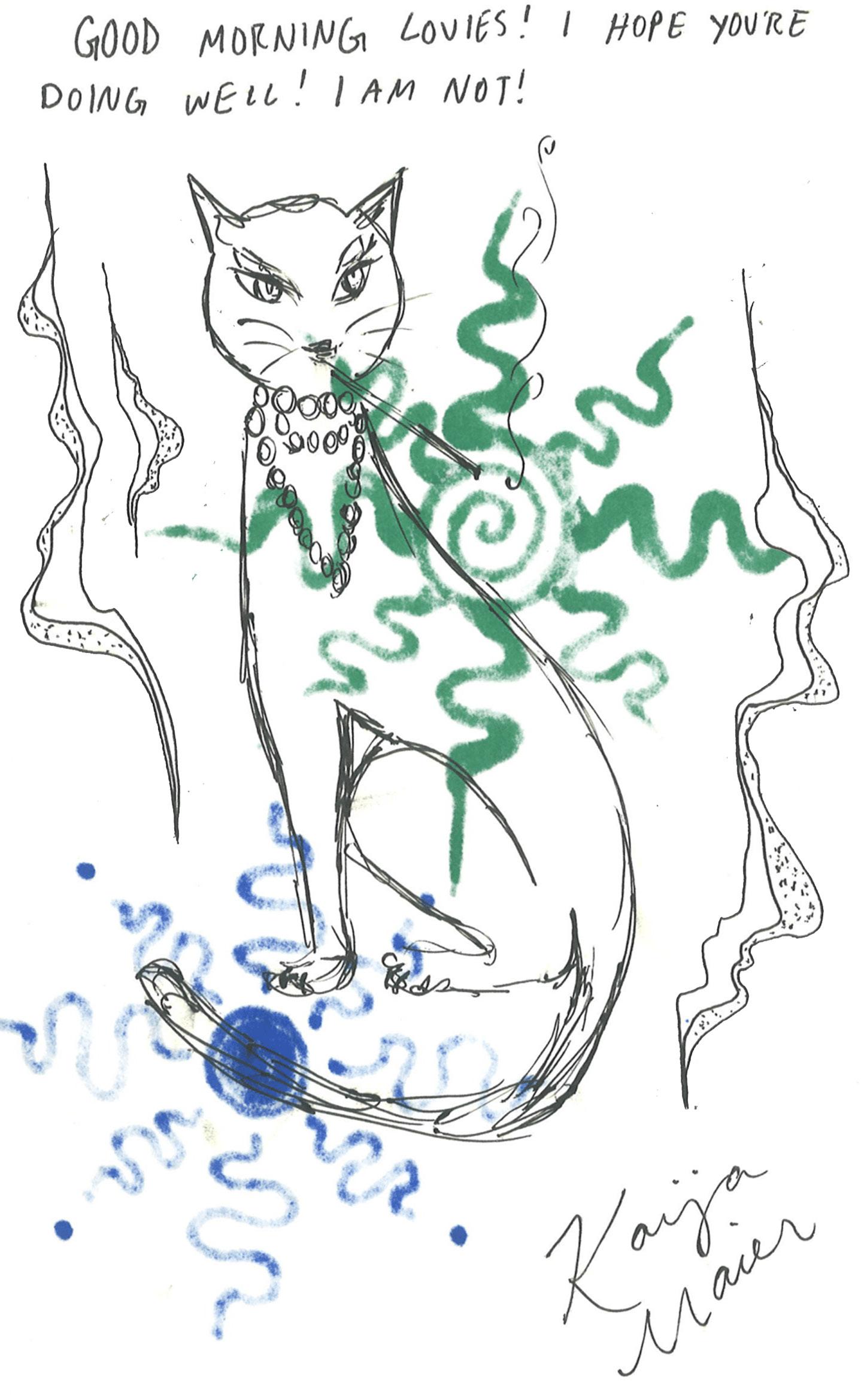
Good Time and Uncut Gems are two A24 crime-thriller movies by Joshua and Benjamin Safdie, more commonly known as the Safdie Brothers. While the film’s themselves have many similarities, their soundtracks are worthy of conversation. Both created by Daniel Lopatin/Oneohtrix Point Never, these synth anthems are some of the most memorable soundtracks to any movie for me. Without further ado, here is my deep dive into and opinions of both of them.
Good Time
“Good Time”
- This song takes a while to get started, and just when you think the track is about to take off it is interrupted with an unsettling distorted human-like sound. This jars the listener as the track picks up with almost extraterrestrial-sounding synths. A tight riff repeats and repeats on top of this, slowly growing louder until it breaks free with orchestral synths layering against the elements constructed earlier in the track. Suddenly the extra layers peel back as drumsticks tap over the anxiety-inducing rift as if one is running away from something horrible. Then it’s quiet with faint wail-like sounds giving way to solemn keyboard notes. Then the chase is on again, then silence, then siren-sounding riffs and the creepy human-like sound from earlier. This track is fantastic, it captures a raw feeling of vulnerability as if running exposed with nowhere to hide. 9/10 this track is as excellent as it is creepy.
“Bail Bonds”
- This track begins with dialogue from the film as Oneohtrix slowly distorts the words more and more as they circle the listener. Then they are replaced with a rapid synth note resembling a fleeing feeling once again. Pattering synth notes break into the rhythm and the volume grows until it is drowned out by energetic guitar chords and crashing drums that go on for a while before slipping
away as the song closes. 7/10, the dialogue at the start is somewhat annoying but if you can get past it the guitar section is well-executed. “6th Floor”
- This track is relatively short, starting with just drums that sound as if they are echoing around a room. Then a cymbal enters the track alongside an erratic synth note that gives way to the sound of rushing air and a short adlib from the film. 4/10, the track is a little short to feel developed entirely but I think it accomplishes its purpose in the film.
“Hospital Escape/Access-A-Ride”
- This is the first fully-realized song since the title track. It starts with repeating drumsticks over a quiet synth riff before growing in volume as the riff becomes more intense in tandem with an arcade alien laser sound. Wailing strings jump in, rising to a crescendo until suddenly most of the instruments fall away to a slower space-like noise that develops into a deep hum and then is interrupted by high-pitched beeps. That track takes a breath before synths return, slowly growing as intermittent wailing chords fight against deep bass sounds to cut through. The energy grows as drums enter again as the song reaches a peak. Phasing out, distorted words joined with sounds of machinery close the track. 10/10, this is great—a must-listen from the album.
“Ray Wakes Up”
- An extended –honestly gross– cut from the film starts this track for the first minute. With the dialogue gettings eventually distorted before fading away to synths that evoke a feeling of being underwater. This is joined by a drumming sound, almost like a ball hitting the ground. The drumming stops and the track ends with the same ocean feeling as it started with. 3/10, again, the adlib frustrates my immersion with it.
“Entry To White Castle”
- The track opens with a police siren and stat-

ic-sounding synths before a repeating riff climbs to the front of the song. The static retreats and the synth riff changes to mimic a similar riff from “Good Time” and “Hospital Escape/Access-A-Ride” –by now this feels to be the calling card sound of this film. The track maintains this focus for quite some time before the police sirens return, cutting off the synths and with the heavy bass of what sounds like a motor starting. 10/10, this track feels like a succinct version of “Hospital Escape/AccessA-Ride” but manages to feel unique as an encapsulating example of the feel of the album at large.
“Flashback”
- Distorted bass sets the tone of this track as ghost-like synth sounds play with stereo features. About halfway through the track, there is a transition to a more robotic-sounding synth riff accompanied by clicking noises that evoke a train going over tracks. Hoarse breathing sounds as the song becomes more exciting before being cut short by blown-out bass and a tasteful adlib from the film. 6/10, this track was consistent but could have been more engaging in the first two-thirds.
“Adventurers”
- The shortest track on the album, adventurers starts with what might be someone dragging a stick along the support beams of a metal railing. The clanging stops and we are left with the sound of cars driving a street in the rain against an airy synth. The stick clanging returns, this time at an almost violent pace before fading with a hiss into quiet. The silence is interrupted with a deep low bass and the song is over. 5/10, unique track and I liked the clanging but it didn’t go much further.
“Romance Apocalypse”
- Wasting no time the song jumps in with energetic synths familiar to the album and a wailing synth layers over the riff. The sound is panicked yet beautiful. The track quiets with repeating drumming and soft bells. Then a loud synth strikes with force and a futuristic feel. 8/10, the ending was well-executed and left me impressed. “The Acid Hits”
progression, you can hear the tick of a clock. 9/10 “Leaving The Park”
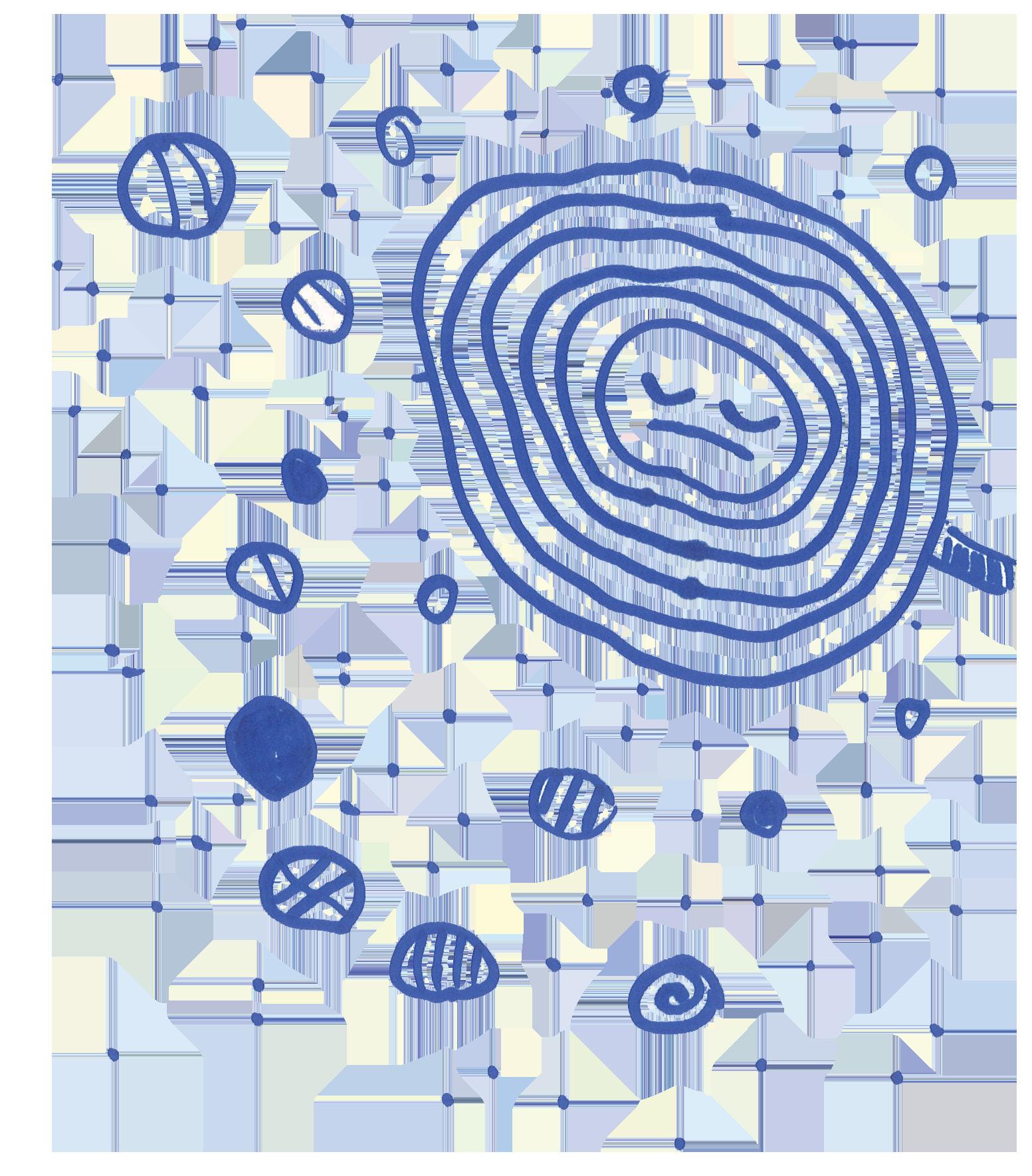
- Synthesized chimes comprise the first notes of the track before transitioning to a repeating electronic riff that progresses slowly. A drawn-out note is unsettling and is distorted further into something that feels like Halloween. The album’s iconic synth cords return. Bat-like shrieks pierce the synths and high-pitched keys add a culminating sense of finality to the track. Drums and shrieks amplify this feeling as the bass flares over the now dance-like electronic guitar beat. Oneohtrix fades the guitars so that only the outer space synth remains and the track ends. 7/10, solid track.
“Connie”
- If the last song felt like Halloween, this track reanimates that feeling. With claustrophobic cymbals and rushing noises around a rapid beat. The pace of the synth slowly quickens as the other chaotic noises grow, giving a sense of nervousness. The iconic distorted human scream from the title track pierces through as the synths near what feels to be a drop before easing into more airy notes and orchestral sounds cut with wiry synth. The lighter tone fades and the wiry synth steps forward, reverberating and sounding mosquito-like to close out the track. 5/10
“The Pure and the Damned”
- The song begins with the sound of rushing water as rapid synths emerge, becoming more and more electronic until the water is drowned out. The jittery pace steps back to give space for a synthesized organ and the song sparkles out with a descending sound before being given life back with a healthy blast of bass. To finish out the track’s
- The final track on the album, and the only one with lyrics, The Pure and the Damned is a fitting end to a solid album. Carried by slow piano notes, Iggy Pop almost prays with, “Love, make me clean, Love, touch me, cure me.” Relating to the movie’s plot of someone committing increasingly horrible acts to save his brother, Iggy Pop continues, “The pure always act from love, The damned always act from love.” As his voice grows more bitter and twisted, reflecting the protagonist, ominous strings amplify the feeling, oscillating between a corrupted and hopeful sound. Synths and choir notes interrupt the lyrics before Iggy Pop and the instrumentals return to their original sound. 9/10, this song accurately captures the feeling of the movie and it is just as poignant.
Uncut Gems
“The Ballad of Howie Bling”
- The track begins with synths as airy and mysterious as the film is, capturing the feeling of the camera descending into the depths of the captivating gem. Pattering notes give a
sense of otherworldliness and the crash of cymbals adds an element of regality. The track descends deeper, exploring further with twinkling sounds and extended synth notes. Horn-like synths feel like electronic trumpets as the track transitions into a guitar and vocal thrum that adds to the sense of regality, complete with a shaker and shouts from the chorus. A saxophone joins the track, becoming an interesting juxtaposition against the chanting. The track meanders for quite some time, inserting and removing the different elements with the inclusion of soft bells before fading. 9/10, this track captured the mystery and beauty of the gem in question from the movie, and the vocals added a sense of history/holiness to the feeling.
“Pure Elation”
- This track begins with fluttering synths that quickly give way to peaceful flutes. The relatively short track carries a lighter tone throughout its run, unusual for a Lopatin track. 5/10, merely for its shortness.
“Followed”
- Nothing like an Adam Sandler adlib to start a track right? After this, ghostly synths and mysterious keynotes enter, slowly exploring the bounds of the track. Like “Pure Elation,” this song is pretty brief but pretty nonetheless. 5/10.
“The Bet Hits”
- With a flute over synth, this track begins more unpredictably than its predecessor. Flute notes oscillate back and forth, uncommitted to a tone for the track. Horns enter the song with falling synths and the track comes to an end. 3/10, I didn’t feel like this track had the direction I was looking for.
“High Life”
- Again, a flute opens the song, this time with more full synths backing it. As soon as you think the synths will take the track somewhere, it’s over. 4/10, was slightly more interesting than “The Bet Hits.”
“No Vacation”
- Adam Sandler again on the adlib before a powerful synth cord interrupts. The cord develops, giving a sense of the mystical feeling in the opening track. 5/10, still pretty short though.
“School Play”
- Eerie chimes set the tone of this track. As they fade, a tapping electronic sound begins, de-
veloping into a more cohesive beat. Disturbing string cords play over these synths as they become more Techno. The beat grows more urgent with metal sounds entering the mix. The track teases its drop effectively with an increasingly tight rhythm, executing a sense of chaos that is relieved to great effect. Sandler interrupts to close out the song. 7/10, the song took its time to develop before the drop but I didn’t feel as engaged by the sonic choices as in other tracks.
“Fuck You Howard”

- Pattering electronic notes open the track before heaven-like synths and choral vocals encompass all. Then, high-pitched synths ride with the contours of the chants. Composition-wise, these synths feel as if they bear the body of a hymn. The music becomes lower and quieter and fades. 10/10, this track takes the religious punch of “The Ballad of Howie Bling” and executes it beautifully. Carrying the hymn with synth cords rather than organs stands out from some of Lopatin’s choices earlier in the album and in Good Time.
“Smoothie”
- Reverberating synths with ominous flutes begins the track with a feeling of anticipation. Sole synth key notes develop into longer flute notes and back into a quicker key riff. This is overtaken by a beautiful horn riff. 10/10, while short this track packs a punch and is my favorite from the album.
“Back To Roslyn”
- Chimes with reverb begin this track before a slow saxophone takes the front stage with mournful chords. Progressing, synths and keys layer over the sax, giving it a more magical feel. The track fades. 7/10, I loved the saxophone but wish the song could have gone on longer.
“The Fountain”
- Creepy instrumentals begin this anxiety-inducing track. Rapid tapping grows as the sound of air spinning changes into loud synths. Repeated pounding on a door enters the track for a period before synths and a deep buzz close the song. Pounding can still be heard in the distance in the final moments. 6/10, the track successfully created an anxious atmosphere but failed to take it anywhere or further.
“Powerade”
- Dancy electronic beats and guitar chords make this song instantly jammy before an adlib interrupts the flow. 5/10, this would have been great if the track was allowed to develop further but it remains constrained to its short run time.
“Windows”
- The quick drumming on pipes that opens this track stands out from the rest of the album. Vocals again chant to a bell’s rhythm but at a more frantic rate than witnessed previously. Electronic buzzing cuts into the vocals, which become increasingly desperate. The drumming becomes more electronic but still maintains its pipe sound. The vocals begin repeatedly chanting in a language I am unfamiliar with. Electronic wails and drumming of a different instrument enter, building on the sense of urgency. 8/10, this track is exciting and fun, presenting a different tone that other songs.
“Buzz Me Out”
- The track begins with the ominous sound of church bells ringing slowly with ambient background. In the final third, a woman sings extended mournful notes. 3/10, this track didn’t go really anywhere.
“The Blade”
- “The Blade” plays almost as a procession, exploring more of the feelings of mystique and authority expressed earlier in the album. Bubbling synths join with distorted horns as synth notes bounce around the listener’s ears. The track ends just as it reaches its sonic zenith. 6/10, a thrustful track but again it ended without a feeling of resolution.
“Mohegan Suite”
- Quick keyboard notes layer over each other before being swallowed in bass and distortion. The ominous gutteral humming returns with classic synth chords, contributing to the growing feeling as the track develops. The bass slows and whirs, revealing fluttering string noises. Synth cords intrude, carrying the track to the finish. 6/10, engaging to listen to but didn’t stand out against some of the better tracks on the album.
“Uncut Gems”
- The final track on the album, “Uncut Gems” begins with a low bass and mysterious notes that recall the opening track. Keys strike with a more developed sense of finality as vocal chorus
phases in and out in the background. The ever-recognizable synth riffs return, cut with sharp notes from the keyboard. These notes climb and fall in great drama, echoing a trance that is recognizable throughout the album. Next, the piano comes in heavy to accompany the synths, adding a regretful undertone to the track as drumsticks tap with finality. The synths reach their highest notes and draw out before fading, rising, and then falling to a nadir to continue unhurried. Twinkling out, one feels that the journey is complete. 10/10, this track tied the album up nicely, taking the listener’s mind on the mystical journey that one would imagine from falling into the sought after gem from the film. Lopatin gives the listener ample time to process the weight of the track before concluding. While both albums are beautiful and well-done, Good Time stands out to me as the stronger project. Although Uncut Gems evoked engaging themes of the mystique and otherworldly power, capturing the feeling of the gem, I found Good Time’s ability to command emotional control and excitement more impressive. Good Time accurately portrays the level of stress and panic from throughout its film, offering both the degree of desperation from the protagonist, and the increasingly disturbing actions he became motivated to commit. Oneohtrix effectively threads the difficult line of making the album a compelling and directing part of the film’s narrative without unsettling the listener to a distracting degree. My biggest frustrations with the project were the interrupting adlibs and the brevity of some of the tracks which either didn’t leave enough time for full immersion or drew the listener out of the song. Uncut Gems suffered from the same issue of underdeveloped tracks, although to a much higher extent. I enjoy both the movies but like my preference of albums, Good Time unequivocally takes the cake here.
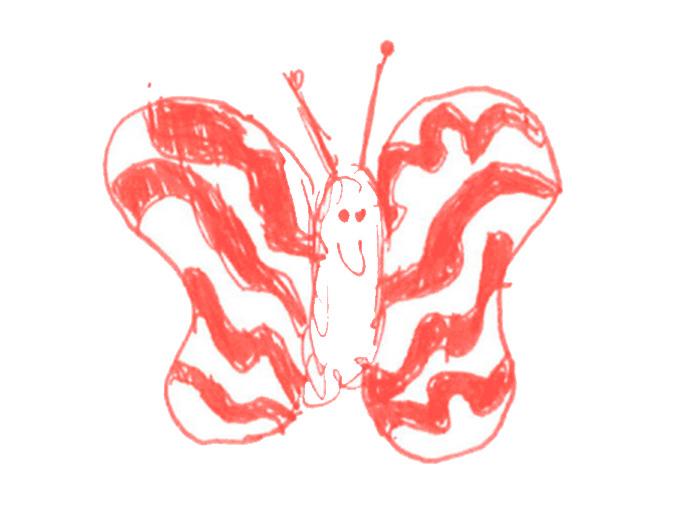

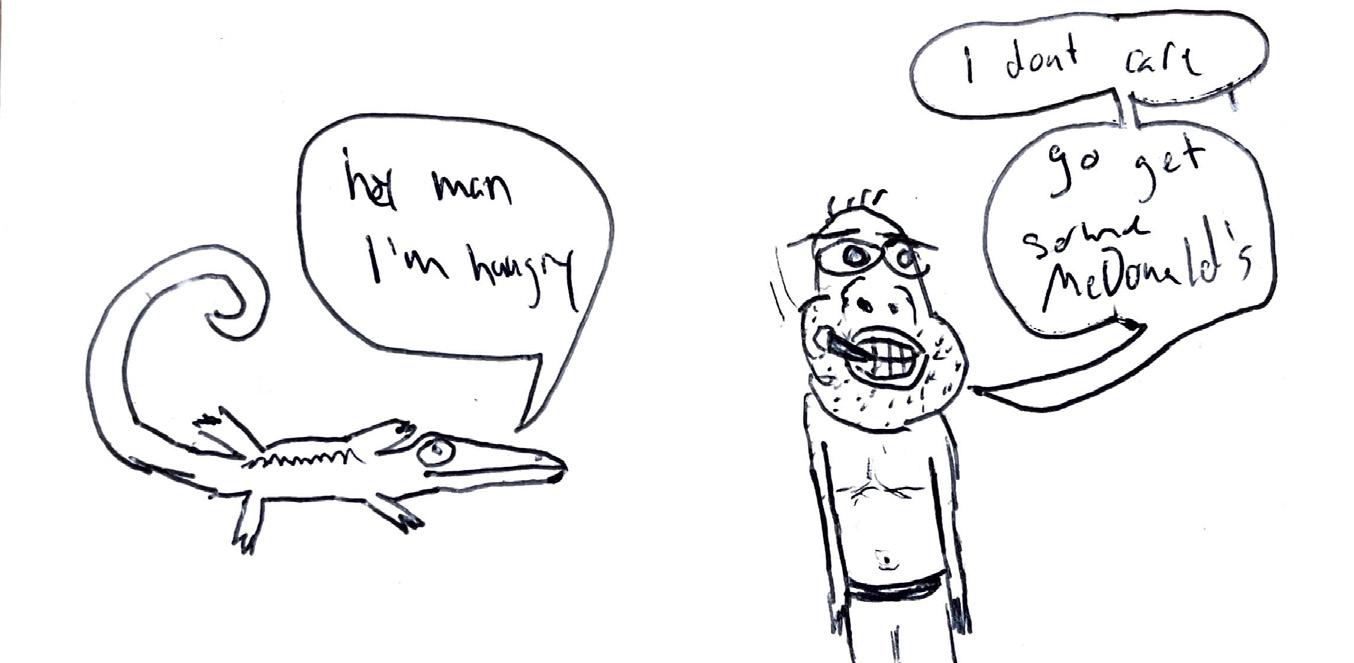




What’s up NoFi readers?
I was going to have a special original article on this cool grindcore band Cloud Rat for you this term, but that project was way too long for how little free time I had to write this term. You might see that article in the fall instead. As a backup I have an album review that I wrote for mxdwn.com (all that matters in entertainment [suck it, NoFi]) as part of my application for their open Metal Album Reviewer position. Good news, I got accepted! Without further ado, here’s the review:
On February 17, Hamburg-based metalcore outfit Half Me released their debut LP Soma through Arising Empire Records. Having established themselves already as strong songwriters and performers in the metalcore genre with their four self-released singles (“Livebait” and “Mantis” in 2020, “Snakeoil” and “Exitwound” in 2021) the band hoped to use their first album release as an opportunity to create something more nuanced and dynamic, using the expand ed scope of an album as a space to explore the different directions they could take their sound in. With Soma, this exploration resulted in a cutting edge release that deserves the attention of metalcore fans everywhere.
Soma sits at a brisk 35 minutes, spread across twelve tracks. Throughout the album, vocalist Chris Zühlke sings and screams heart-rending lyrics based on mental illness which go hand in hand with the aggressive production and songwriting. The album holds a remarkable level of tension, urgency, and dynamism at every moment. Half Me owe part of their power to the genres and groups that inspire their sound: the band exhibits influence from fellow metalcore acts like Void of Vision and Northlane, deathcore groups such as Alpha Wolf, 90s nu metal a la Korn and Slipknot and even some modern hardcore. What really makes them stand out, however, is their ability to push their songs in unexpected directions while keeping them exciting and satis fying. In Soma, each track has a distinct feel while also clicking with the rest of the record.
Half Me set the tone for Soma clearly from the first track, “Wraith,” which employs blast beats, too many groovy riffs to count, a crushing breakdown, and gripping clean choruses, keeping the listener on their toes throughout. The next two tracks introduce even more dynamism, as “Trauma Culture” oozes neck-liberating hardcore energy (reminiscent of Knocked Loose), and “Distort” breaks up its thunderous metalcore riffing with abrasive synth passages in the style of recent Northlane releases. “Magma,” the aptly-named fourth song on Soma, has perhaps both the most interesting song-writing on the entire album as well as the catchiest chorus (“One final step into the gates of heeeeeellll”), though it might be challenged in that regard by the closing track, “Half Me,” which absolutely bleeds grief-stricken alt metal melodicism (“A ghost condemned to give in, I feel a part of me is missing”). Taken as a whole album, Soma is a cohesive listen, balanced expertly between spacious, powerful melodies and brutal dissonant sections, and with plenty of songwriting curveballs that come back as

highlights of the album in later listens. Zühlke’s vocal delivery, whether sung or screamed, is always suited to the grueling emotions of the lyrics he has written, and never becomes stale, while Hesse and his fellow guitarist Julias Jensen are experts at satisfying yet unpredictable guitar work. Drummer Maximilian Eisersdorff and bassist Tobias Sajons deserve a mention too for their ability to keep the songs as tight and groovy as they are. The band is firing on all cylinders, and their performance allows the music to shine. Soma is a strong debut from Half Me that exceeds expectations for today’s metalcore scene. It makes for a whirlwind of a first listen, and only becomes more enjoyable when replayed. It is sure to excite even the most jaded of metalcore enjoyers.





This review was originally written in February 2019 for the defunct blog postmusica.com.
Repetition is something that is hooked to us; it is part of our humanity, but since each one manifests his will, the repetition is expressed in any way. The comforts or routines we resort to for our well-being are some of the most common ways: we all like to go to sleep after a long day of school or work or have our favorite dish for lunch every weekend to reward ourselves for getting where we are.
However, in music, repetition is a double-edged sword. Audiences may consume repetitive beats on the radio or Spotify’s Top 40 list on their way to their destinations, but when it’s time to sit down, people expect something that will blow their minds: from the aggression of metal to the different ways a song can be transformed in progressive rock. Despite this, repetition was a crucial part of the formation of other genres, such as house, hiphop, and ambient.
William Basinski is an American composer now based in Los Angeles. He is known for his works created from tapes containing music loops that he modifies and then joins to create different pieces. Thanks to this technique, he has created his bestknown works: The Disintegration Loops series with deteriorated tapes (whose creation coincided with the attacks of September 11, 2001) and Melancholia. With these two works, he made a name for himself in the ambient community. That’s when A Red Score in Tile comes in, one of his not-so-well-known works but the best, in my opinion. This album, even by the standards of Basinski’s music and ambient in general, is considered quite repetitive, as it consists only of a loop that repeats for approximately 45 minutes. It was originally recorded in 1979 to accompany
the painting of the same name by the painter, frequent collaborator, and Basinski’s partner, James Elaine. The work that can be seen on the album cover consists of a stuffed dog covered in a thick layer of red acrylic paint. The description of the work, referred to by Basinski himself as “shocking” in an email he replied to me, contrasts with the simple melancholy loop.
The piece was originally released in 2003 in a vinyl-only edition on the Three Poplars label. Then, in 2014, it was reissued on CD by Basinski’s own label, 2062, to be put on various digital music services between 2017 and 2018.
The loop consists of a single melody, apparently performed on a Fender Rhodes and with a low fidelity that complements the album’s overwhelmed aesthetic. The spread of the notes floats freely in the dense atmosphere provided by the quality of the tapes back then, which can be transmitted even from a digital file. As you listen to it, you realize that the piece stagnates in its own anxiety and becomes background noise for your thoughts. It puts you in a place where two completely different emotions reign together, peace and despair.
The despondent melody presented on that sweet electronic piano within such a tight yet expansive space causes confusion. It’s like being somewhere big and empty - like a mansion or a church - but it gives you the same sense of confinement as four windowless walls. It’s a vibe of tranquility embraced with fear and uncertainty, touching on all kinds of emotions known and unknown to the listener.
Unlike Basinski’s other projects, for me and the many of us who enjoy or have a special connection to this project, this loop is distinguished by its sad and mournful but not aggressive nature. To explain it in a way, it’s what it would sound like in grief after tragedy when you doubt your destiny

and try to lower the expectations of your relationships or life; the waiting room for the worst to come, the loading screen of the next chapter, the hymn of guilt but the bridge to redemption, getting on your knees and wondering what you are doing wrong. These are the various forms the piece has taken in my life, and it has been there when I have had to move on.

The ability to perfectly describe a moment without resorting to anything more than a simple loop is part of the impact. It’s a record that speaks to you and understands you while only repeating the same thing. What it can tell you is up to your interpretation, but it’s something you hold on to at the moment. It accompanied me in difficult personal situations, and thanks to it, I was able to control the damage I was receiving; but at the same time, it gave me a chance to recover and move on to redemption, depending on the case.
There are factors preventing me from recommending this album: from the general dislike of repetition by the public to the dread that this album will no longer become a part of me thanks to the rejection it may receive for the above, but for me, this will be a misunderstood masterpiece that has held my hand since I first heard it and will be part of what defines my musical taste and existence in general.
You can listen to an extract of the piece here:




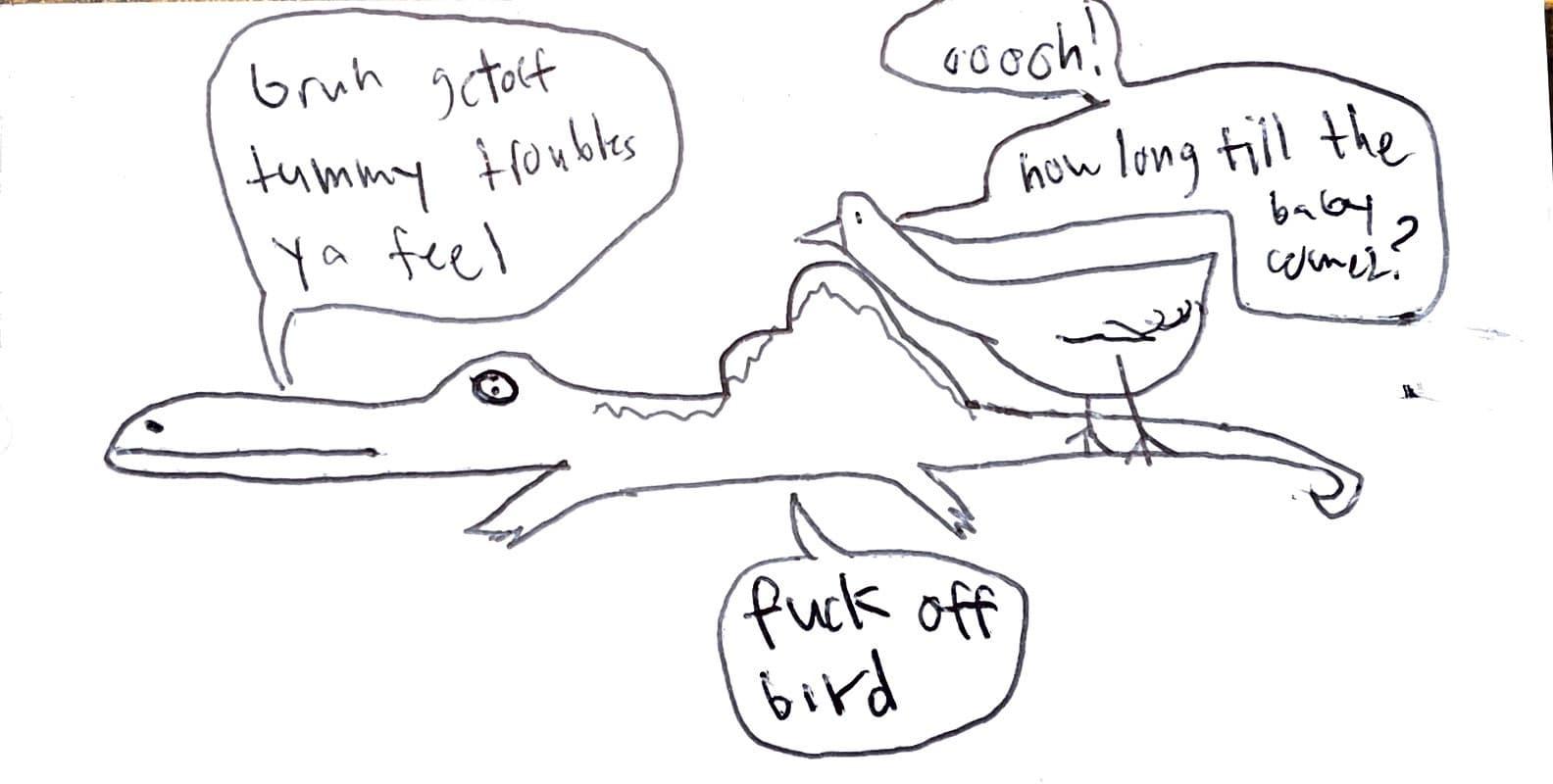

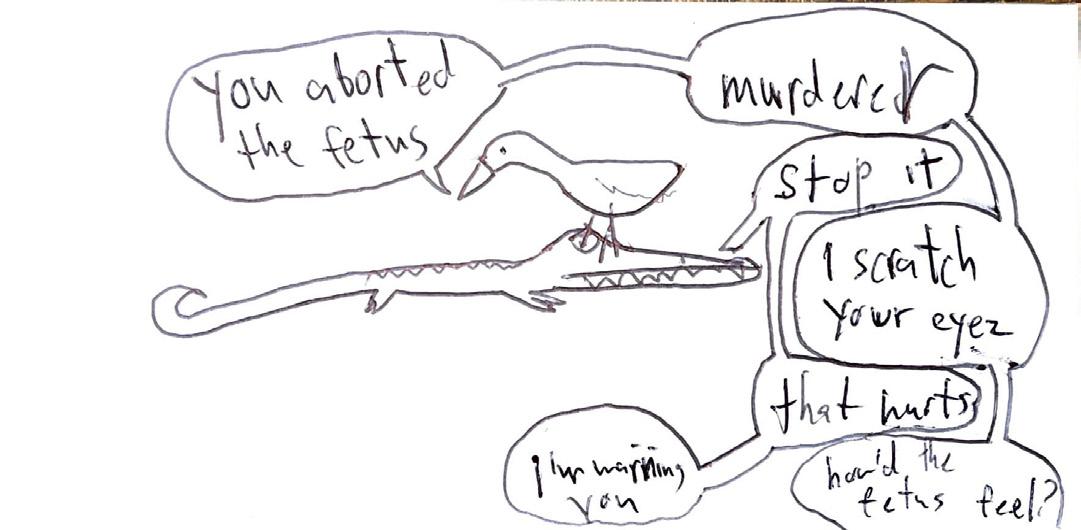



“Is this how the whole thing is gonna end?”
In
In their 2022 single “Weird Goodbyes”, The National reminisce about a life they plan to leave behind. “Memorize the bathwater, memorize the air, there’ll come a time I’ll wanna know I was here”, frontman Matt Berninger sings, backed up by vocals from Bon Iver. The song tells the story of a reflective drive away from an ex-partner’s house. “I don’t know why I don’t try harder”, the refrain begins, as Justin Vernon joins in. “I’ve been going down some strange water.” A mile into the drive, the car begins to break down, paralleling the narrator’s mental state: “I’m pulling over, until it heals, I’m on a shoulder of lemon fields,” the two sing, asking, “What was I even leaving for? I keep going back and forth.”
First Two Pages of Frankenstein (2023), even without “Weird Goodbyes” on the tracklist, finds The National pulled over on that same shoulder. The title is fitting, as Berninger was inspired by the beginning of Mary Shelly’s Frankenstein, where the narrator is alone and adrift on an arctic sea-voyage. Being four years out from their last album I Am Easy to Find, The National weren’t sure whether they’d ever make music again. Berninger, their primary lyricist, had sunk into a deep depression during the pandemic, amplifying anxieties he’d
sung about since their first album in 2001. In the opening track of First Two Pages—“Once Upon A Poolside” featuring Sufjan Stevens—Berninger worries that the “walk-on’s almost over”, anxious about having to perform in the band again.

“I can’t keep talking, I can’t stop shaking”, the bridge begins. The song’s title almost humorously reflects on the band’s career, the cover of their self-titled debut displaying a man at the edge of a pool, and the water itself being a place for reflection. “Is this how this whole thing is gonna end?” he asks fittingly near the end of the song, before he and Stevens close with, “I thought we could make it through anything”. Much of First Two Pages involves taking stock, and reminiscing about old and moments from a past relationship. “What was the worried thing you said to me?” Berninger tries to recall in the opener. He continues wondering in the second track “Eucalyptus”, which describes a break-up: “What about the instruments?”, he asks of his band. “What if we moved back to New York?”, referencing him and his wife’s old home. As he imagines these scenarios, Berninger decides that “You should take it, I’m only gonna break it.”
“New Order T-Shirt” does a similar cataloging. “I
keep what I can of you,” the chorus goes, “Split-second glimpses and snapshots and sounds.” The upbeat lead single “Tropic Morning News’’ finds Berninger doomscrolling, agonizing about his inability to communicate and the disconnect he feels with the people closest to him. “You wait around in a conversation while I get in and start stumbling through it,” he observes in the chorus, afterward asking, “Oh, where are all the moments we’d have? Where’s the brain we shared?” He then resigns at the bridge, “I would like to move on and be through with it,” and in the following song “Alien” sings, “I’m gonna let them forget us.”
However “The Alcott”, a chilling duet with Taylor Swift, presents a turning point. The song tells the story of a reunion with a lover now estranged, and is uniquely conversational due to Swift’s individual lyrics in the chorus, which she alternates with Berninger. “I think I’m falling / Back in love with you” they sing repeatedly, together. The same lyric closes out the track, signaling a reconnection, after the gaping distance which characterized the first half of the album. The following track “Grease in Your Hair” has echoes of those past songs, with Berninger talking about how everything is “all jumbled up” and “when I stand up I freeze”, however the lyrics feel more present now. He notices, rather than recalls, things about his partner: “Fingernail polish, water balloon eyes, totally honest,” getting to a joyous reconnection in the bright, victorious-sounding chorus: “Down we go on the grass…we’re in the middle of some kind of cosmic rearrangement”. Even when the lyrics acknowledge a problem, such as “I used to know you well”, the immediate next line is “You give me such a future feeling”, which looks hopefully at this relationship’s evolution. In the last three songs, The National begins to investigate and heal the state they’ve been in. In “Ice Machines” Berninger steps back to observe himself. “I don’t need anything / But I do” he acknowledges before the chorus, where he asks, “What am I doing watching clocks…wandering halls…pounding walls?” In “Your Mind is Not Your Friend”, he recites this lesson alongside Phoebe Bridgers: “Your mind is not your friend, it takes you by the hand and leaves you nowhere.” It’s all in your head, they essentially say. The anxieties of the past nine songs haven’t been productive. The National like to end their albums on a melancholic note. The closing tracks of their past two talked about distance, and literal endings: “I’m not holding out for you…If I tried you’d probably be hard to find,” Berninger sings on “Hard to Find” (2013). On 2019’s I Am Easy to Find, their last project before the pandemic, the closer describes them being “light years away” from a potential listener, partner, and even each other.
Breaking from the pattern, the last song “Send for Me” invites a closeness, instead of being a closer that accepts distance. “Send for me whenever, wherever”, the chorus vows. “If you’re ever sitting at the airport and you don’t wanna leave…if you’re ever in a psychiatric greenhouse,” Berninger sings, recognizing that his audience might find themselves in situations he’s familiar with. Situation he’s gotten through over the course of First Two Pages of Frankenstein—aptly named, as the project represents a new beginning for the band. “I’ll know what to do” Berninger promises, “I’ll come and get you”, coming full circle to echo the last line of their first album: “I’ll wait there for you.”


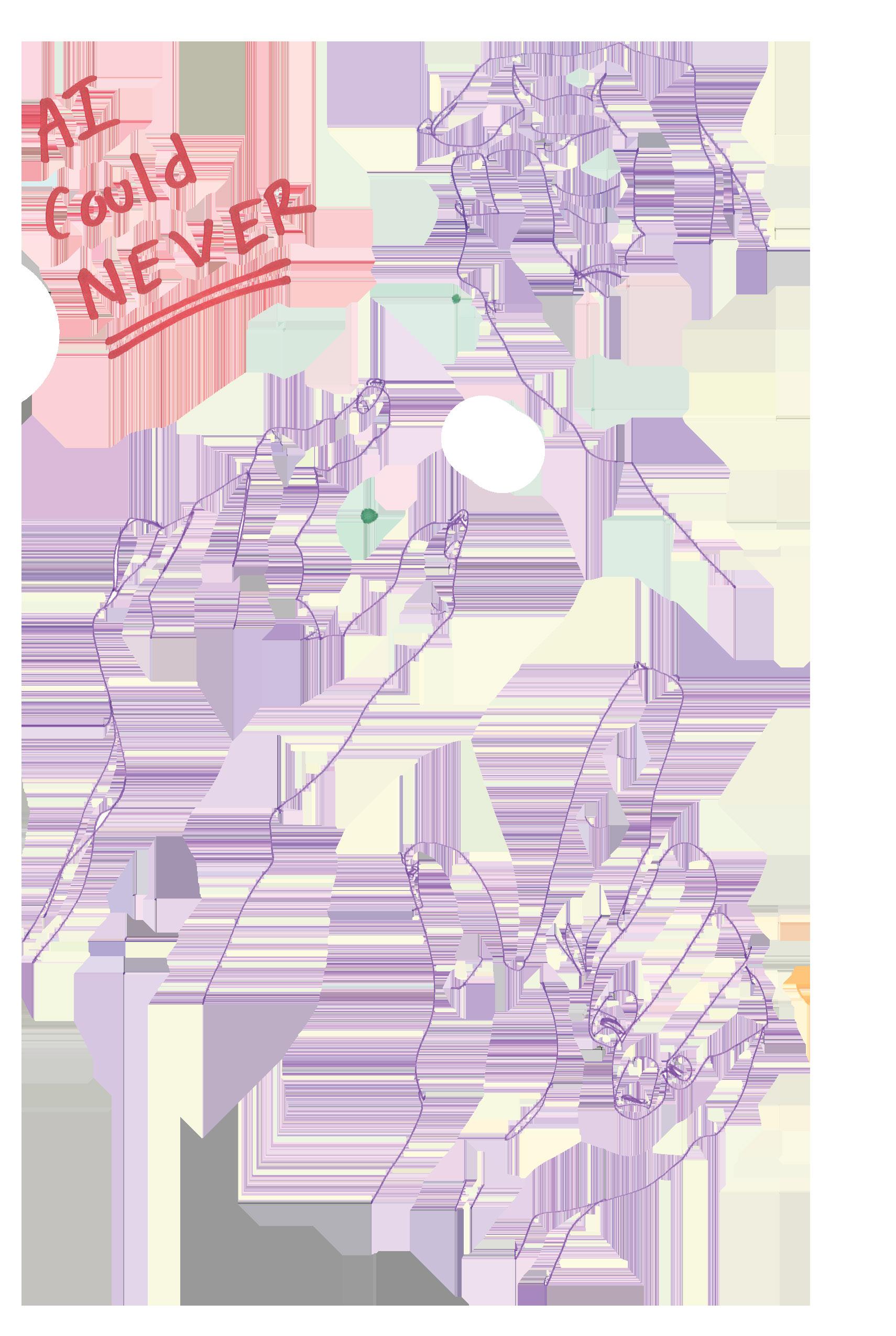
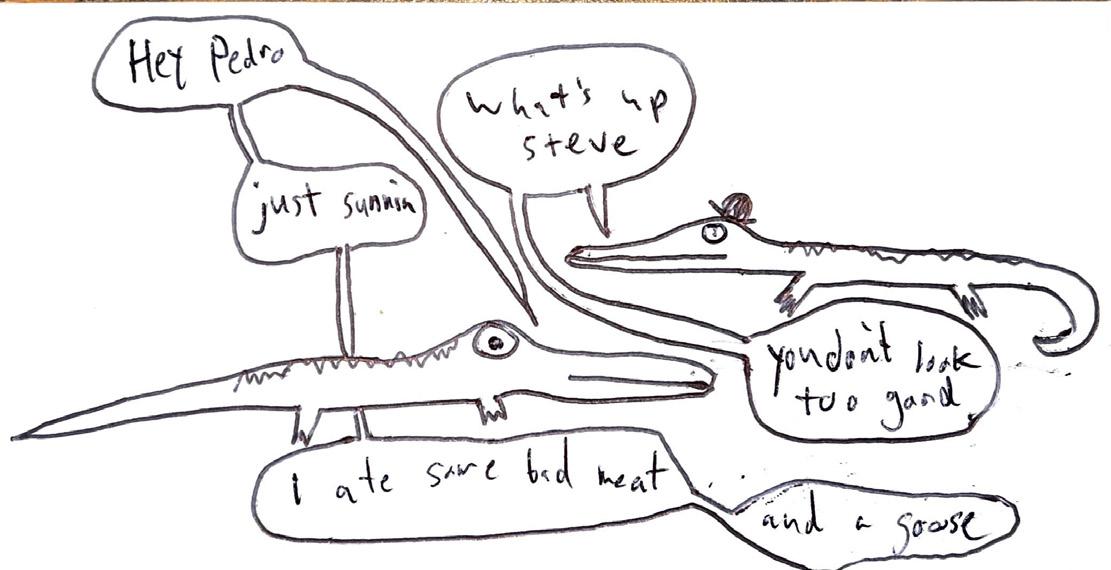
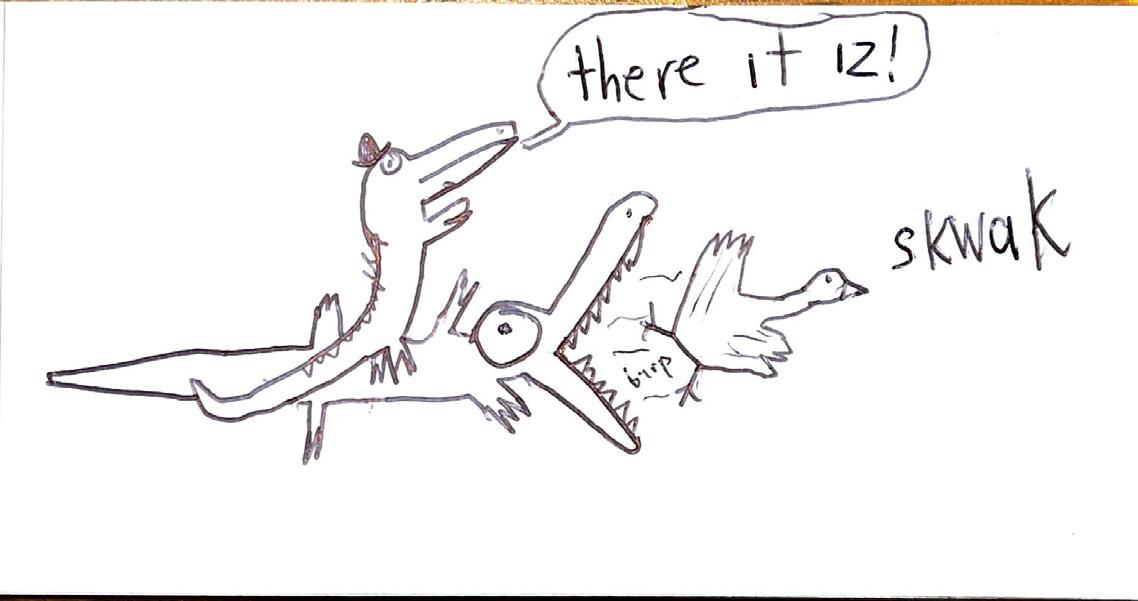





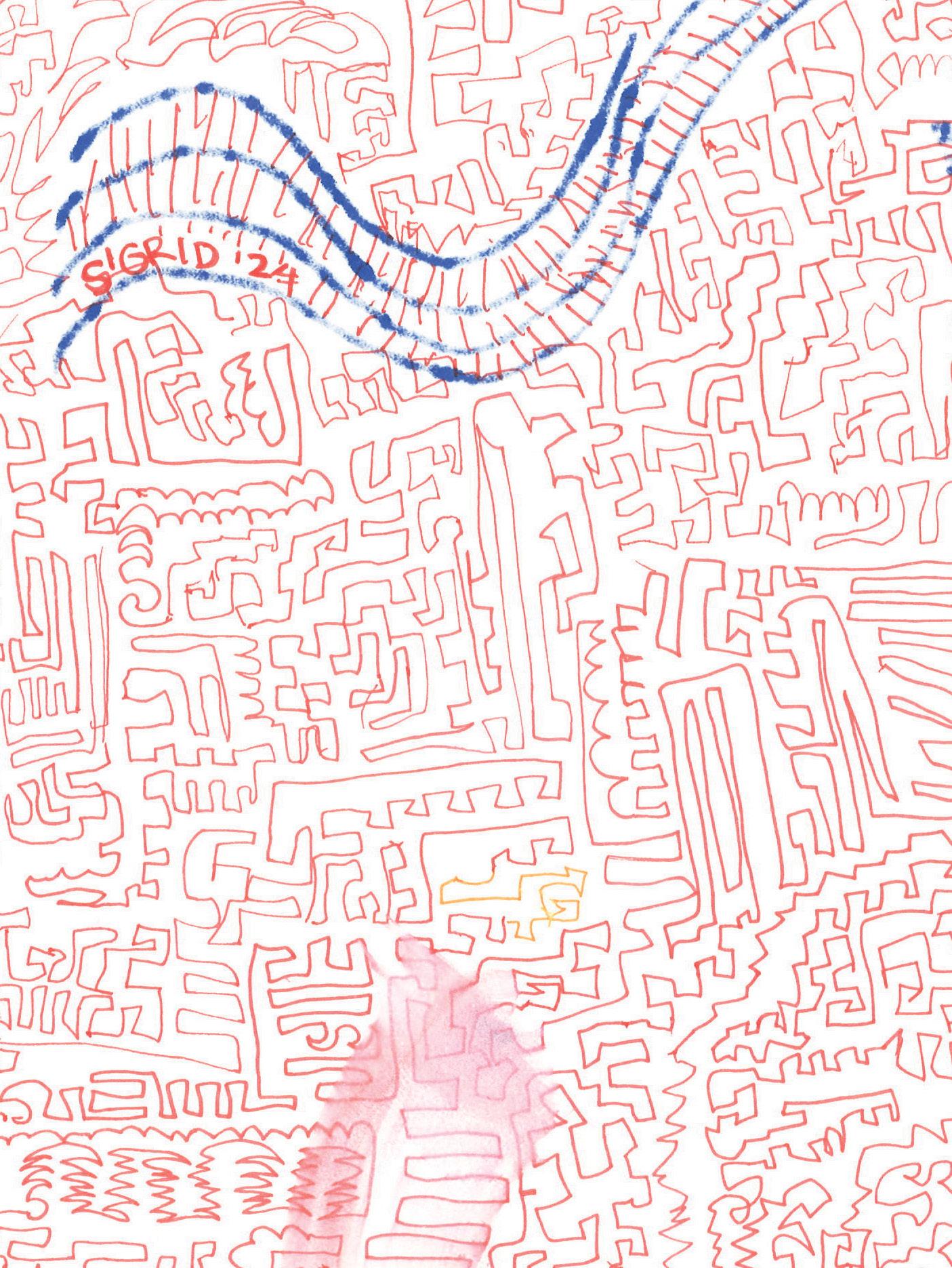
Two-Headed Boy by Neutral Milk Hotel - New Student Week Swarm
Dirty Little Secret by All American Rejects - After consuming Bon App’s experimental pizzas
Maps to the Stars by Surf Curse - When your favorite person leaves for an OCS and it’s hitting
Warned You by Good Morning - P.E. Credit
Spit on a Stranger by Pavement - The term starts feeling too slow-paced
Hanging from the Ceiling by The Velveteins - Slept through a class
Lonely Mess by Laundry - Seeing my side of the dorm (absurdity)
Don’t Ask Why by My Bloody Valentine - Worst essay you’ve ever written
Hey Girl by Paul Cherry - Convincing your friend to leave town for once
World Class Cinema by Gus Dapperton - Mid-term break freedom
Me and Mine by Mac DeMarco - Claimed your study spot
Generational Synthetic by Beach Fossils - Advising meeting
Flame by Sundara Karma - Northfield winters
Entertainment by Phoenix - Egregious amount of work
Makeout by Dreams We’ve Had - …
Sofia by Leland Blue - Declaring your major
Hacker by Death Grips - Finals week













No-Fi Community

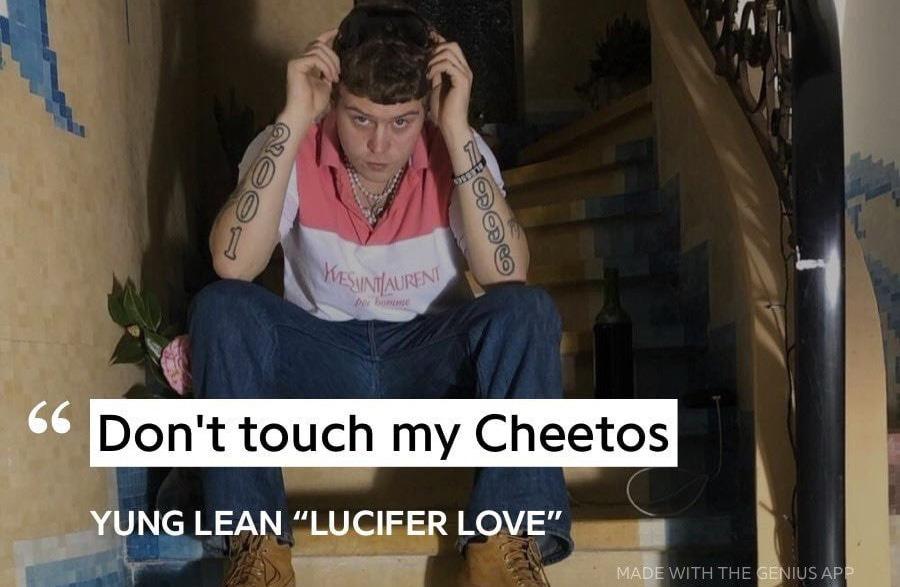
Fritos are way better so don’t worry Jonatan!
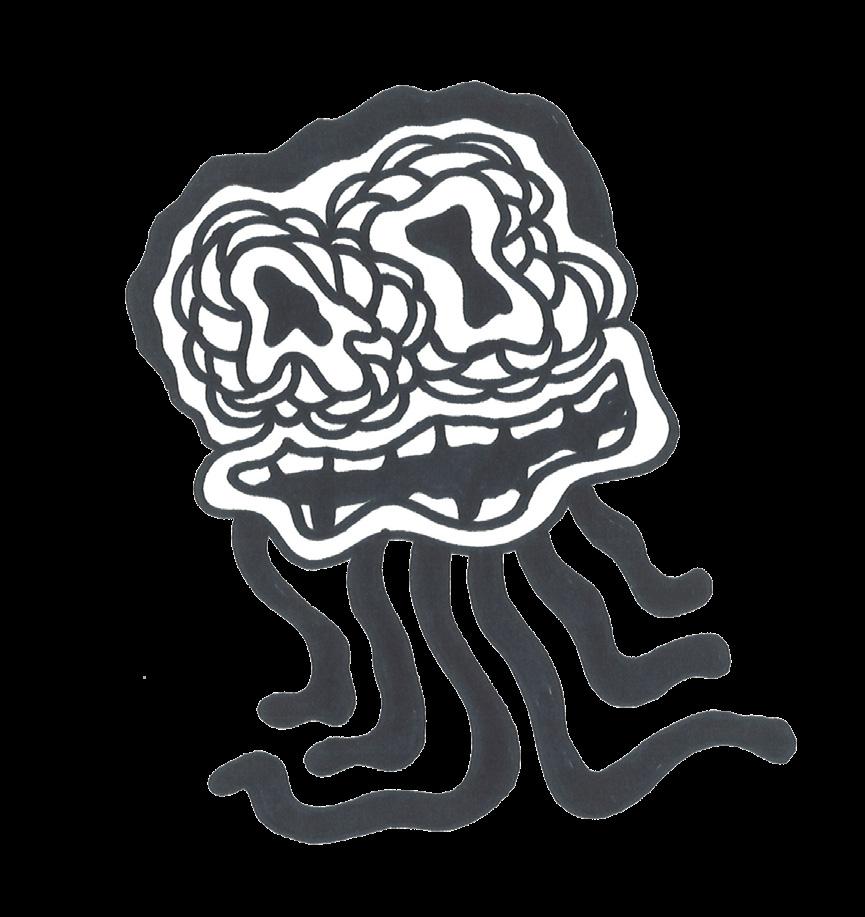

Come on man what did the pigeons do? Submitted by Arthur




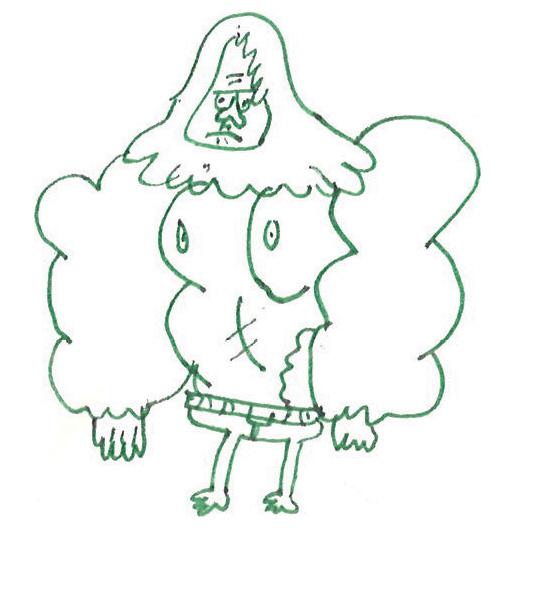


24kGoldn has Carl vibes… Really well fit headliner.
Submitted by Sigrid

The 20th century had T.S. Eliot. The 21st century has Bladee.
Submitted by Joanne


